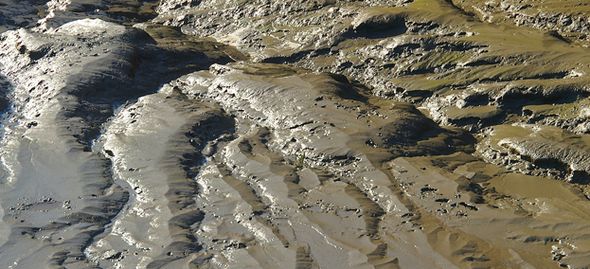The Different Types of Sludge
There are six types of sludge primary, biological, mixed, digested, mineral and physico-chemical.
1. Primary Sludge
Primary sludge comes from the settling process. It is therefore made of easily decantable suspended particles: large and/or dense particles.
It has a low level of Volatile Solids content (VS around 55% to 60%) and its dewatering ability is excellent.
It is also very easy to concentrate this type of sludge with a static thickening step just before dewatering.
2. Biological Sludge
Biological sludge comes from the biological treatment of the wastewater. It is made of a
mixture of microorganisms. These microorganisms, mainly bacteria, amalgamate in
bacterial flocs through the synthesis of exo-polymers. A simple decantation in the clarifier
will easily separate the bacterial flocs from the treated water.
Only part of this settled sludge is sent to dewatering: the excess biological sludge; part of it is recirculated to maintain the bacterial population in the reactor.
To simplify, we will not differentiate between the different qualities of biological sludge (prolonged aeration, low charge, high charge…); their main properties are:
- A high Volatile Solids content: VS around 70% to 80%.
- A low dry solids content: 7 g/l to 10 g/l. It is often necessary to introduce a dynamic thickening step by flotation or gravity belt.
- The dewatering ability is medium. It depends partially on the VS. The higher the VS the harder it is to extract the water from the sludge
3. Mixed Sludge
Mixed sludge is a blend of primary and biological sludges. The blending ratio is often as follows:
- 35% to 45% of primary sludge.
- 65% to 55% of biological sludge.
This blending will permit an easier dewatering as the intrinsic properties of this sludge are between the other two types.
4. Digested Sludge
Digested sludge comes from a biological stabilizing step in the process called digestion. This stabilization is performed on biological or mixed sludge. It can be done under different temperatures (mesophilic or thermophilic) and with or without the presence of oxygen (aerobic or anaerobic). Following this stabilization step the properties of the sludge are:
- A lower Volatile Solids content: VS around 50%. A mineralization of the sludge occurs during digestion
- A dry solids content around 20 g/l to 40 g/l
- A good dewatering ability
5. Physico-chemical Sludge
This type of sludge is the result of a physico-chemical treatment of the wastewater. It is composed of flocs produced by the chemical treatment (coagulants and/or flocculants).
The characteristics of this sludge is the direct result of the chemicals used (mineral or organic coagulants) and of course of the pollutants in the water
Your content goes here. Edit or remove this text inline or in the module Content settings. You can also style every aspect of this content in the module Design settings and even apply custom CSS to this text in the module Advanced settings.
6. Mineral Sludge
This name is given to sludge produced during mineral processes such as quarries or mining beneficiation processes. Their nature is essentially mineral particles of various sizes (including clays). They have a very good aptitude to settle by gravity and very high concentrations are frequently obtained.
Parameters that influence the dewatering abilities of sludge:
Several parameters concerning the sludge will influence its ability to dewater easily. Amongst these, the main ones are:
Concentration (g/l):
Measured in g/l, the concentration of the sludge will influence:
- The incorporation of the flocculant. The higher the concentration of the sludge, the harder it is to mix in a viscous solution of flocculant (even at low flocculant concentrations). Solutions to this problem are: post-dilution of the flocculant, injecting the flocculant upstream, multiple injection points of the flocculant, use an on-line mixer
- The consumption of flocculant. The higher the concentration of the sludge, the lower the consumption of flocculant. This is true only if the incorporation is correctly done.
The organic matter content (%):
The organic matter content is comparable to the Volatile Solids content (VS). The higher the VS, the more difficult the dewatering. The dryness achieved will be low, the mechanical properties will be low and the flocculant consumption will be high.
When the VS of the sludge is high, it is recommended to add a thickening step in the process in order to achieve a better dewatering.
The colloidal nature of the sludge:
This characteristic has a very important effect on the dewatering performance. The higher the colloidal nature, the more difficult it is to dewater.
Dewatering Aids
Sludge is generally conditioned before thickening and dewatering. Two types of conditioning chemicals are used to enhance the treatability of the sludge:
- Mineral chemicals such as iron salts and lime. These chemicals are frequently found in filter press applications.
- Organic chemicals such as coagulants and flocculants. The most common type of flocculants encountered are cationic in nature.
Iron salts:
Ferric Chloride and Iron Chloro-Sulfate are mainly used in conjunction with lime to condition the sludge before a filter press.
They allow a better filterability by coagulating the colloids (thus lowering the content of linked water) and by micro-flocculation of the precipitates (hydroxides).
The dosages for iron salts are between 3% and 15% of the dry content, depending on the quality of the sludge.
There is a trend to associate iron salts with organic flocculants (cationic) in order to lower the volume of the sludge produced compared to a classic iron salts + lime process.
Lime:
Lime as a conditioning agent is only used in conjunction with iron salts on filter press applications. It brings a mineral nature to the sludge and strengthens its mechanical properties (higher specific resistance to filtration). The dosages for lime are between 15% and 40% of the dry content. Lime is also used after dewatering to stabilize the sludge.
Flocculation:
Flocculation of sludge is the step in the process where destabilized particles are agglomerated in aggregates called flocs.
Flocculants, with their very high molecular weights (long chains of monomers) and their varied ionic charge, fix the destabilized particles on their chain. Therefore the particle size in the aqueous phase will increase throughout the flocculation step with the formation of flocs.
The formation of flocs induces a release of the water. This water will thus be easily eliminated during the dewatering step. Sludge Pumps.





